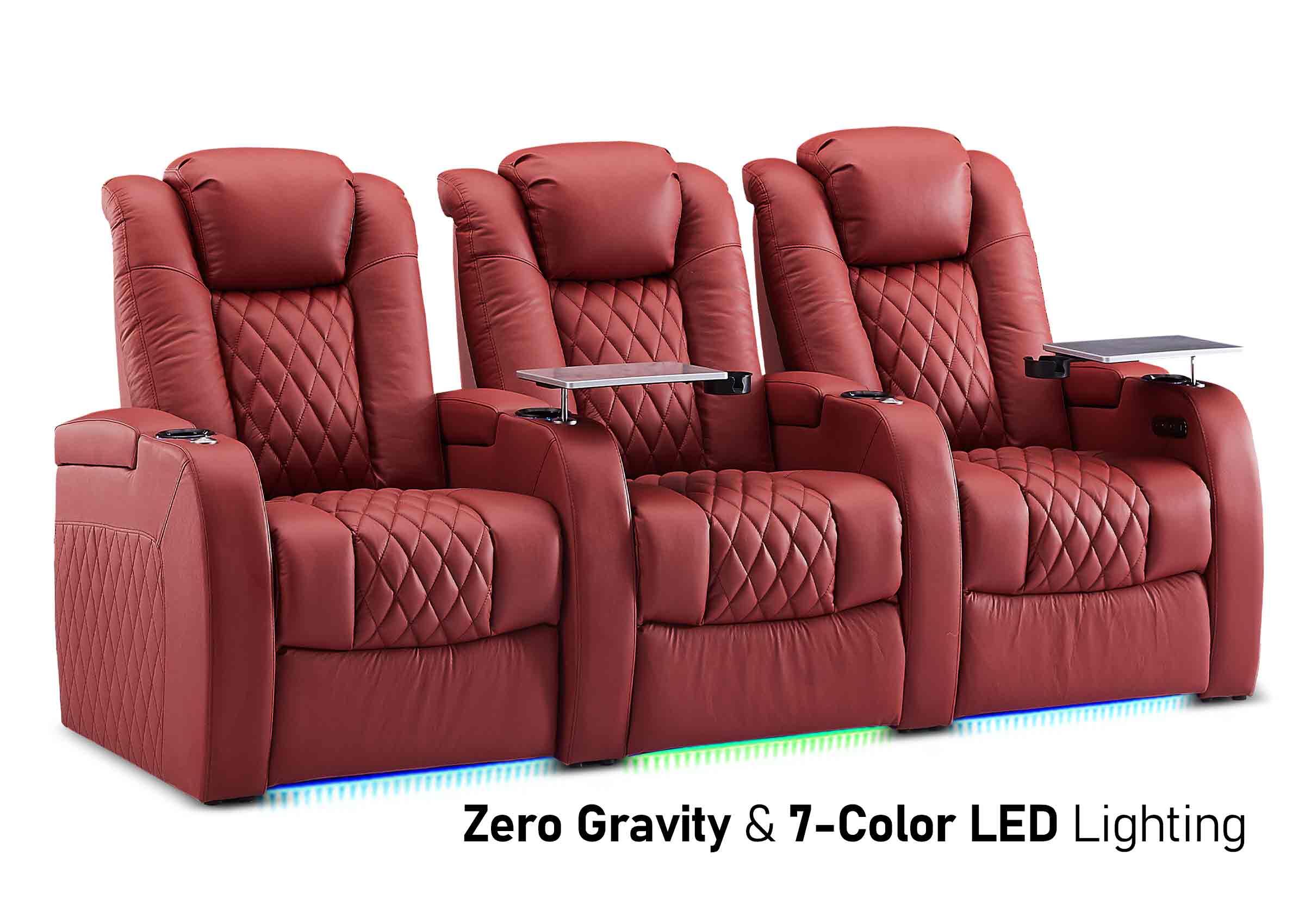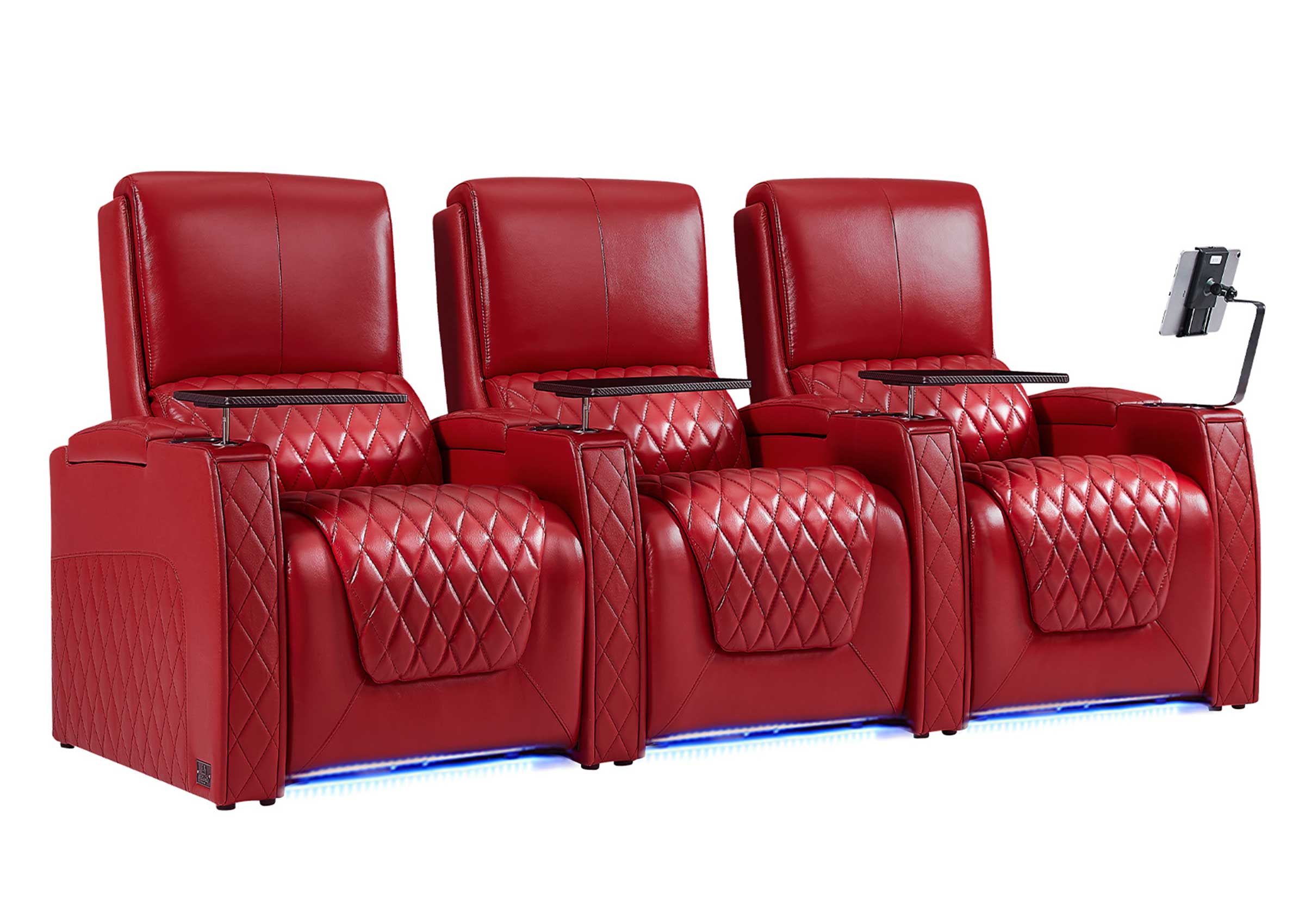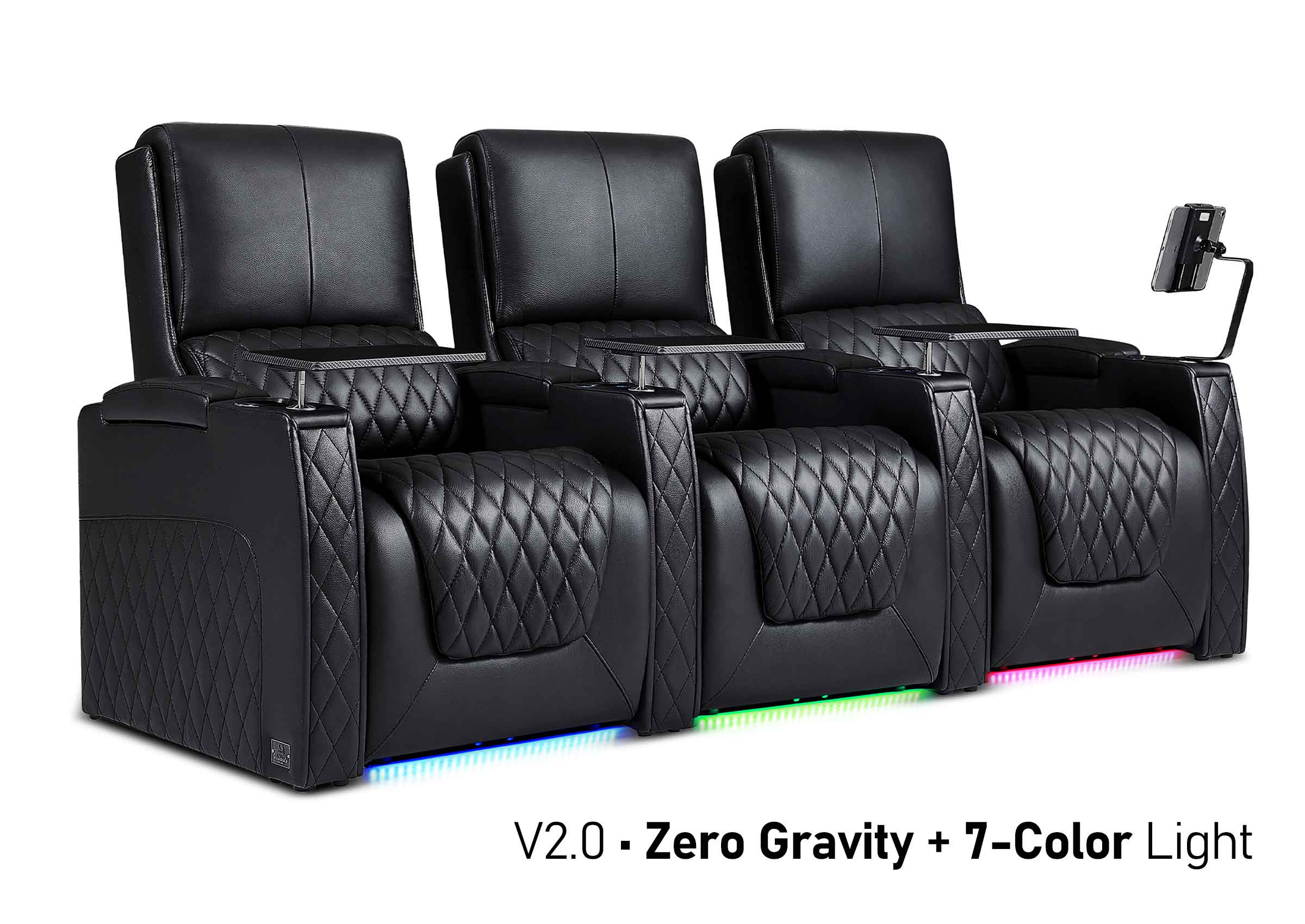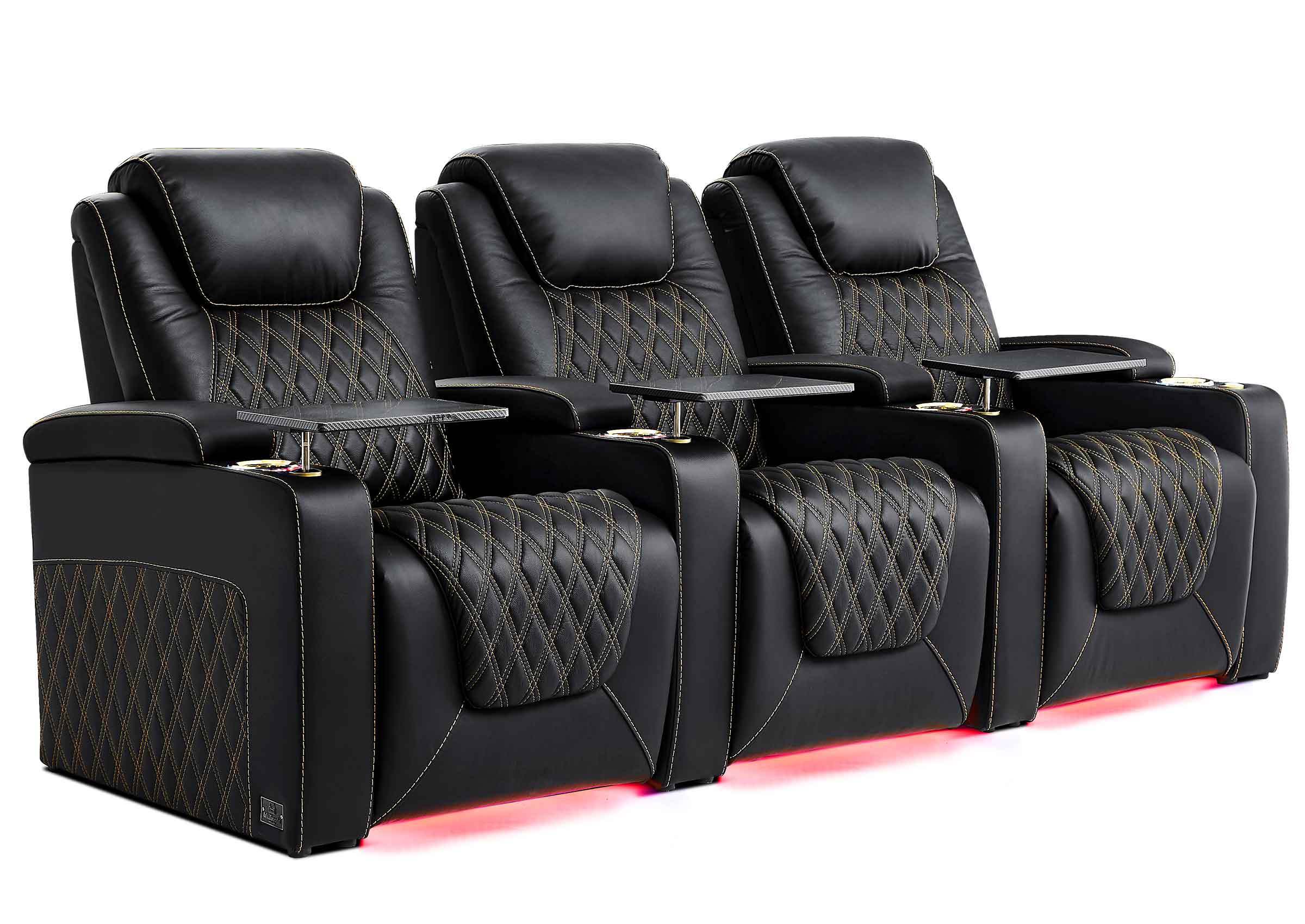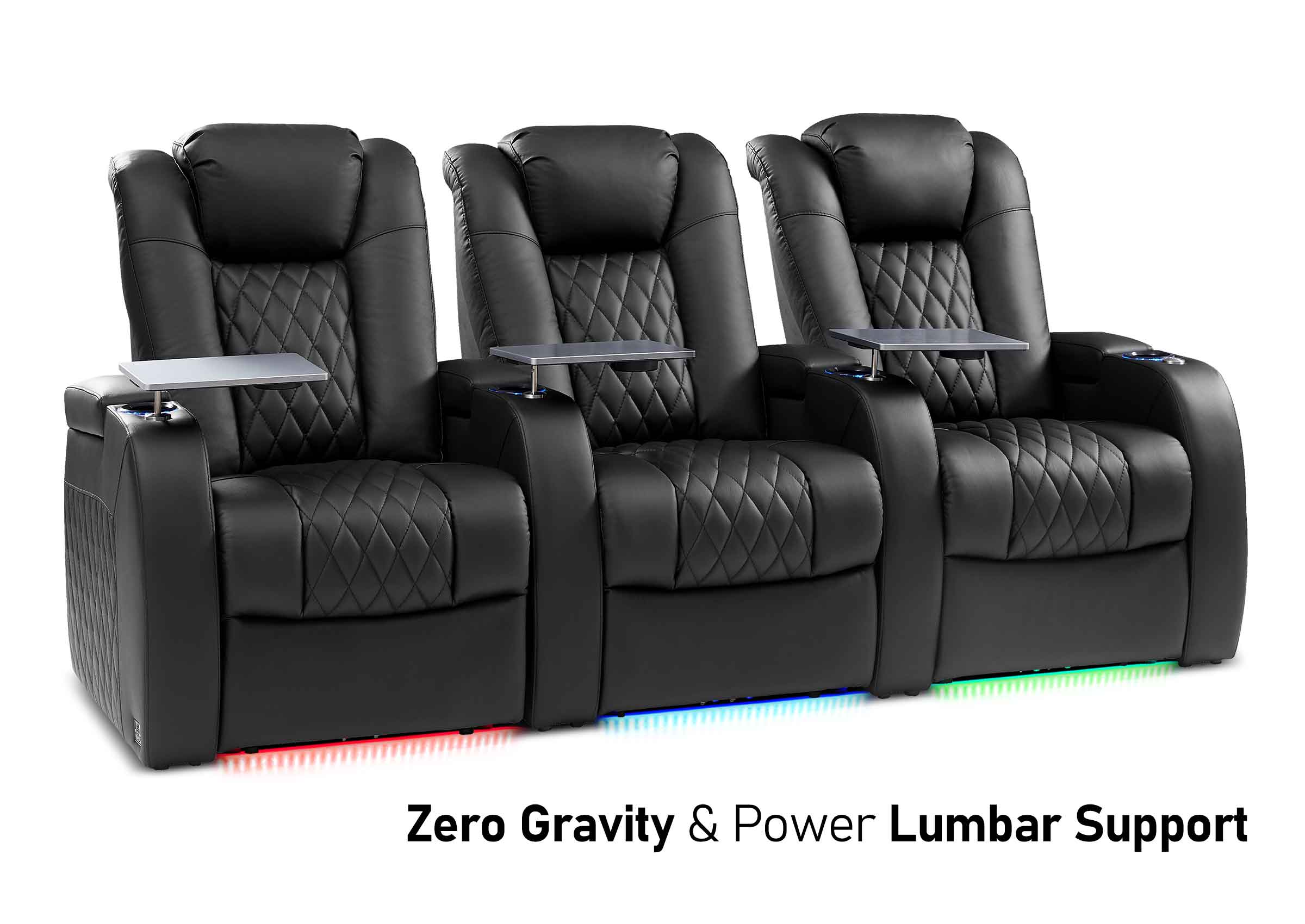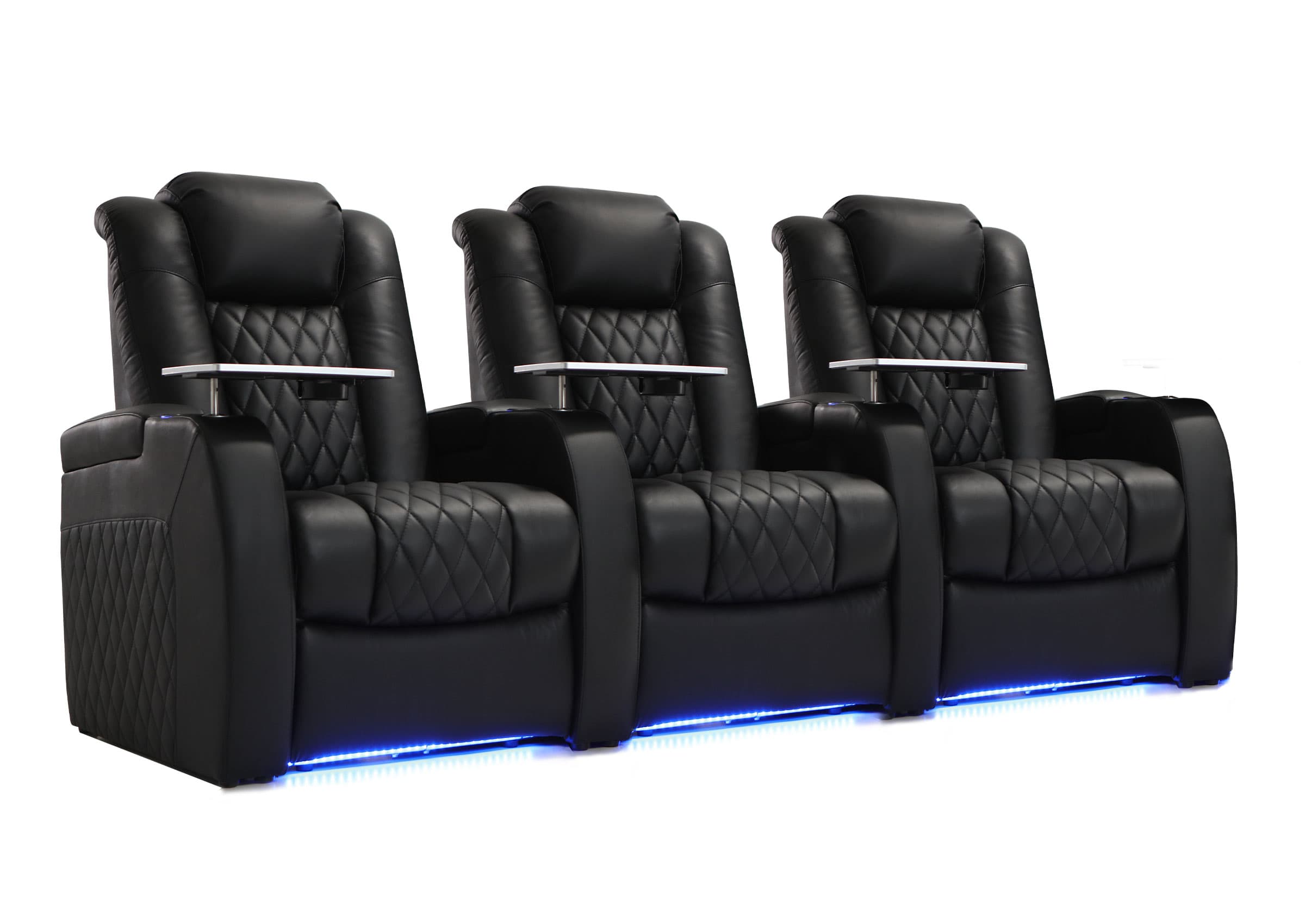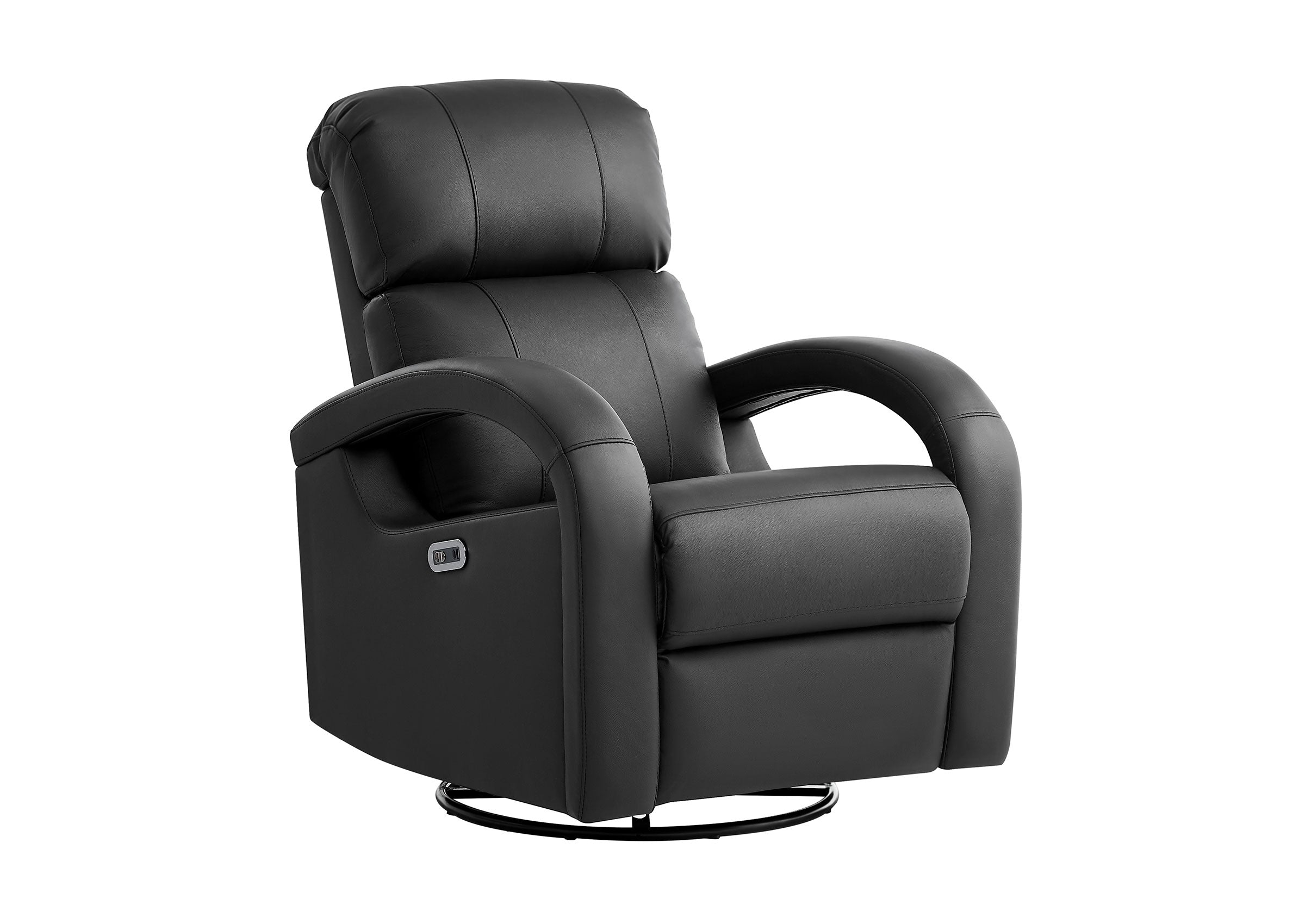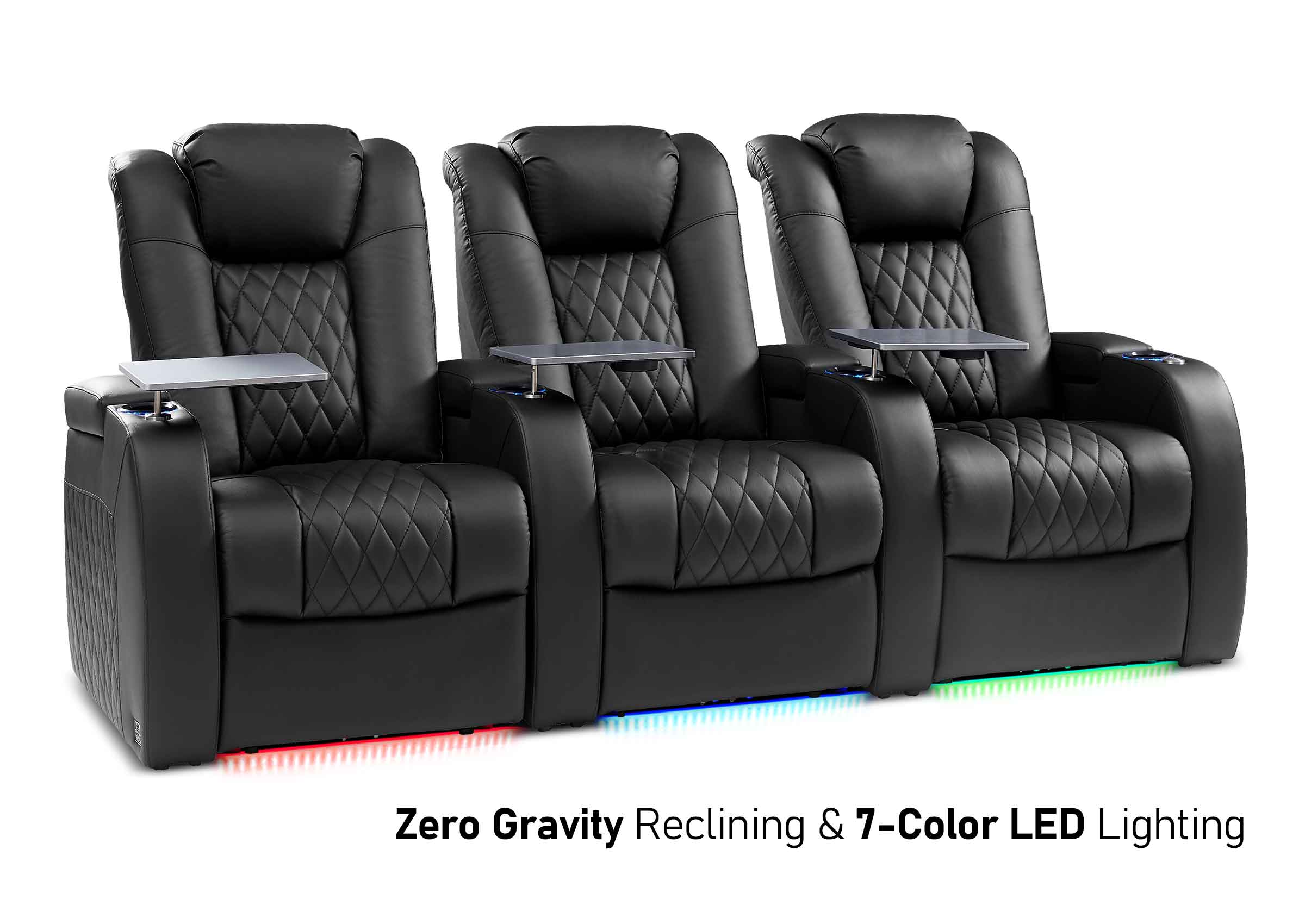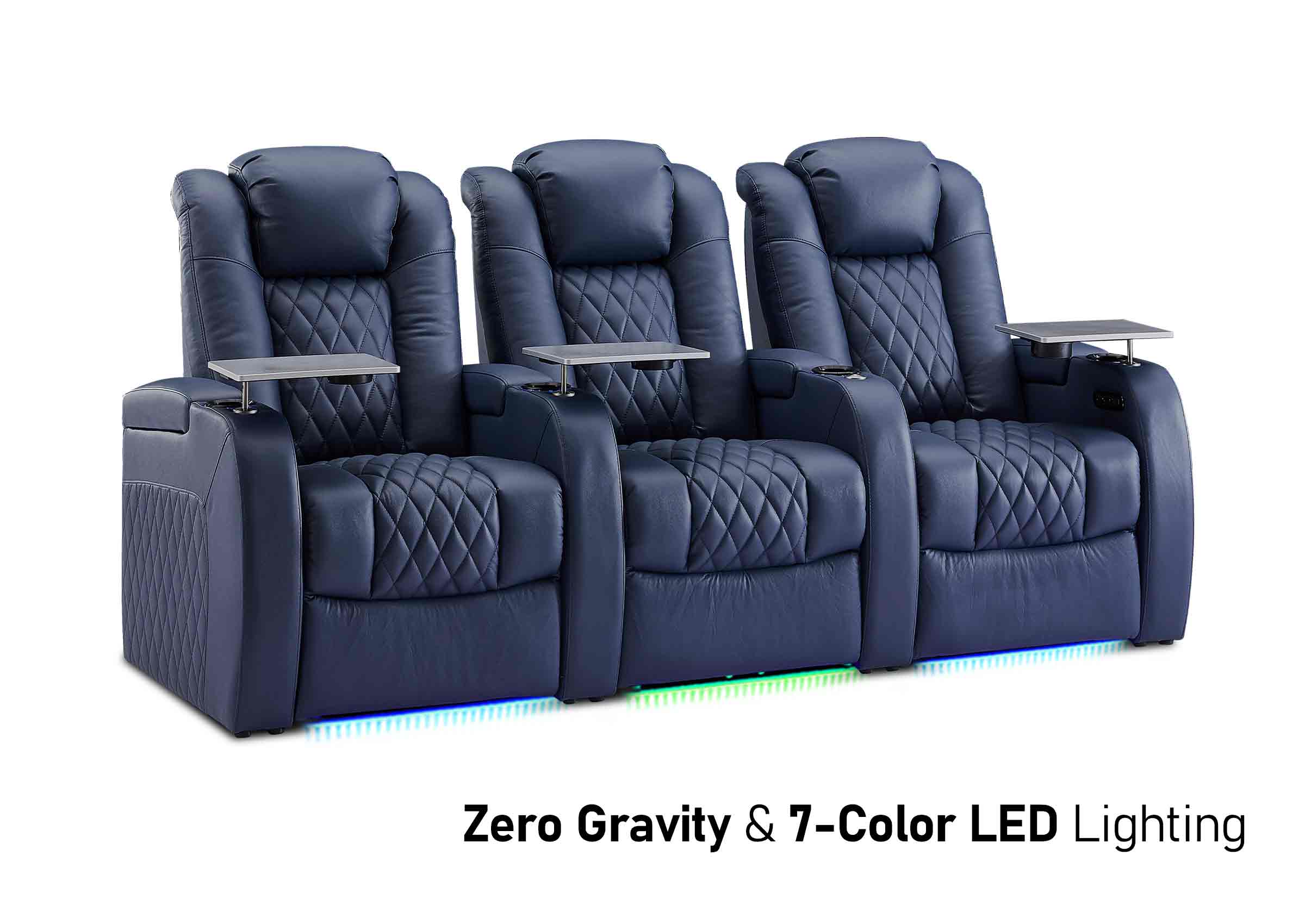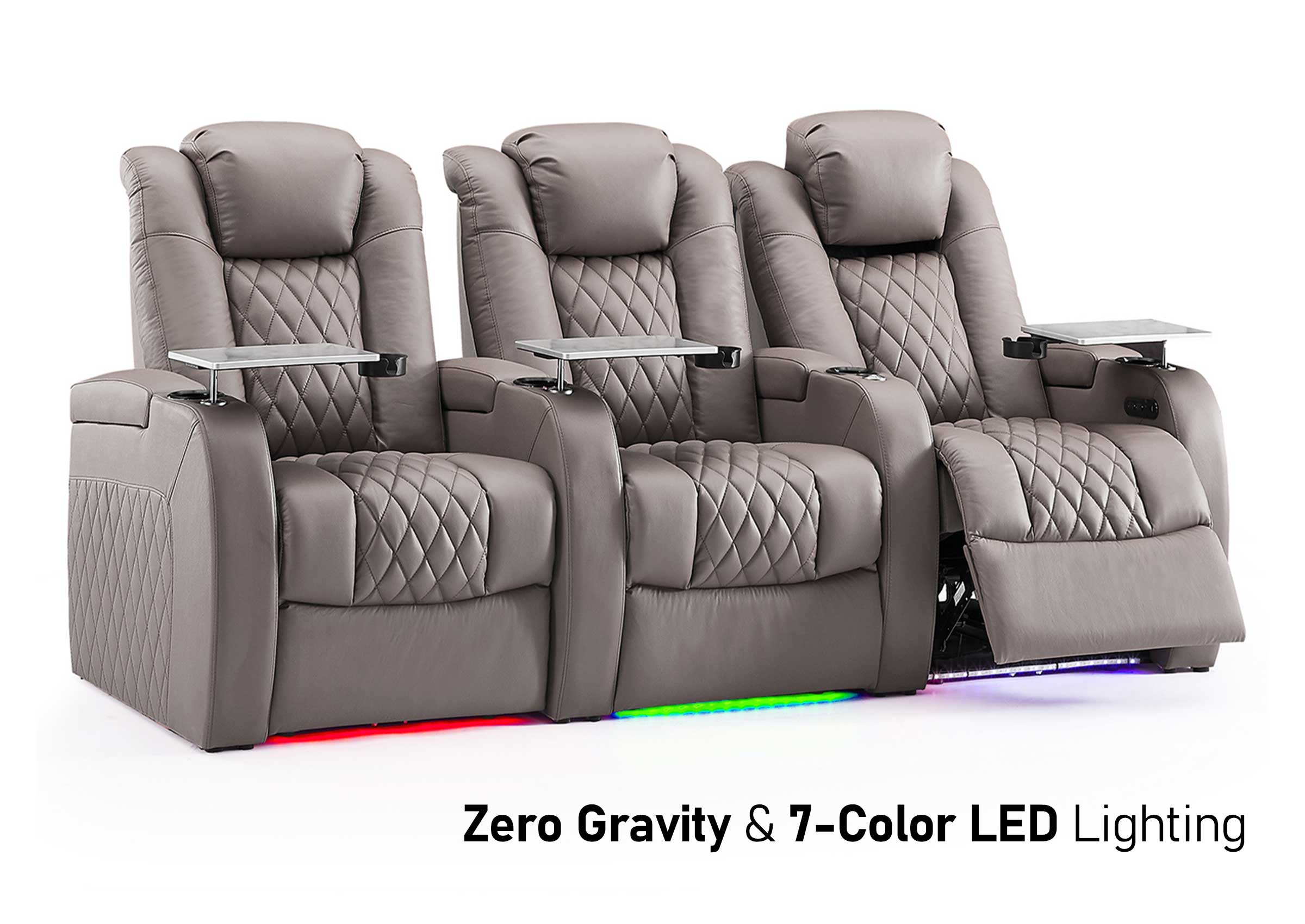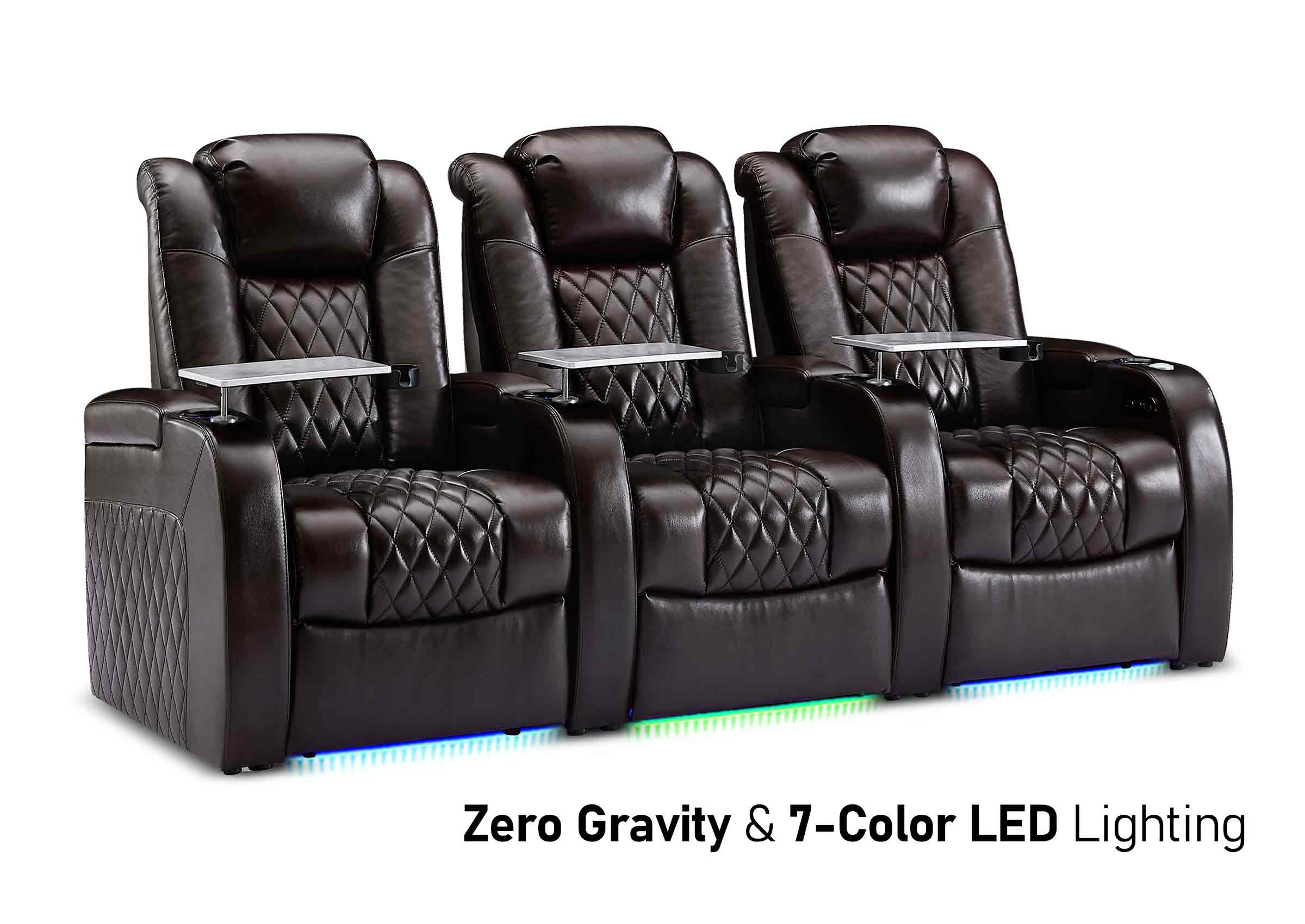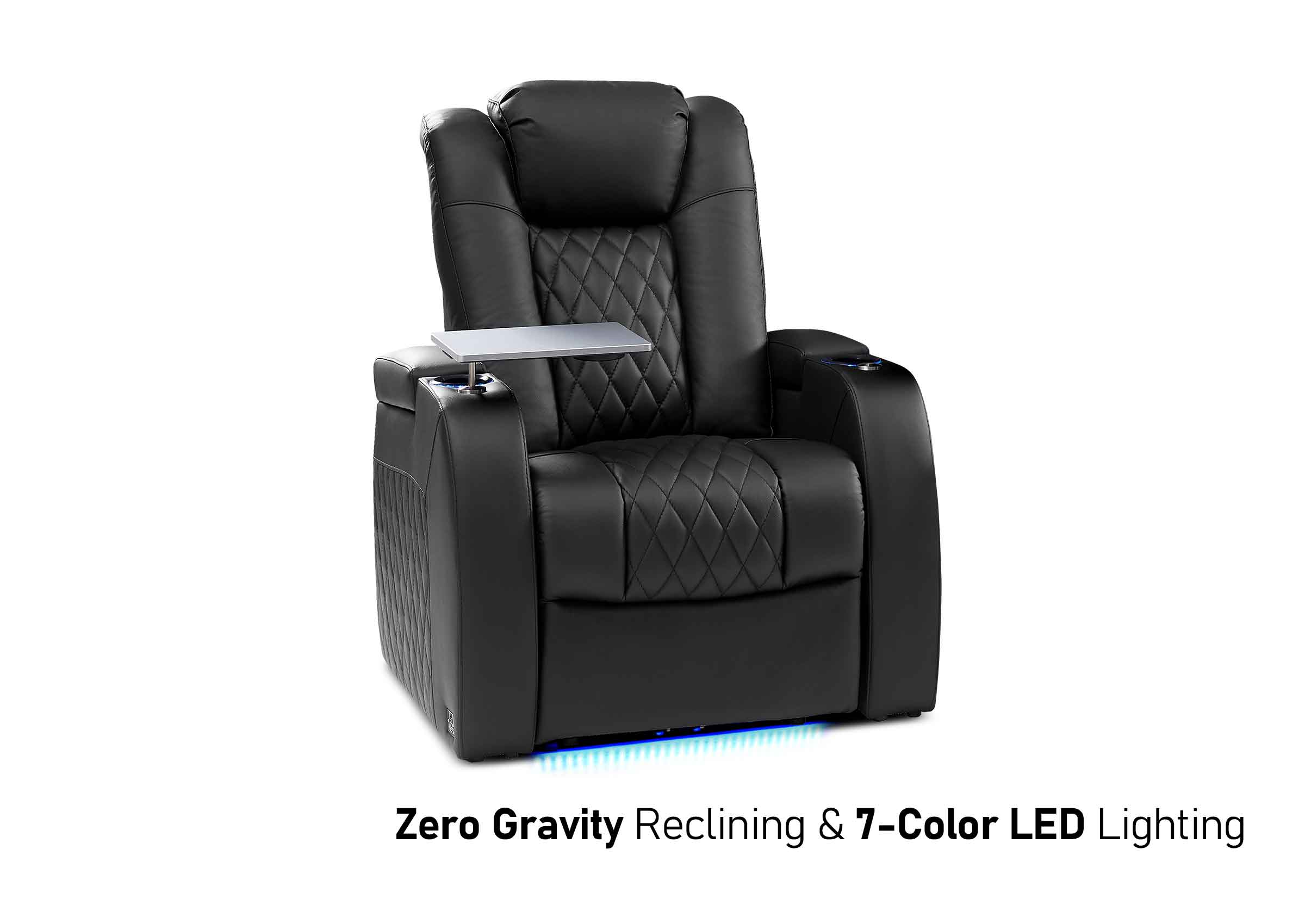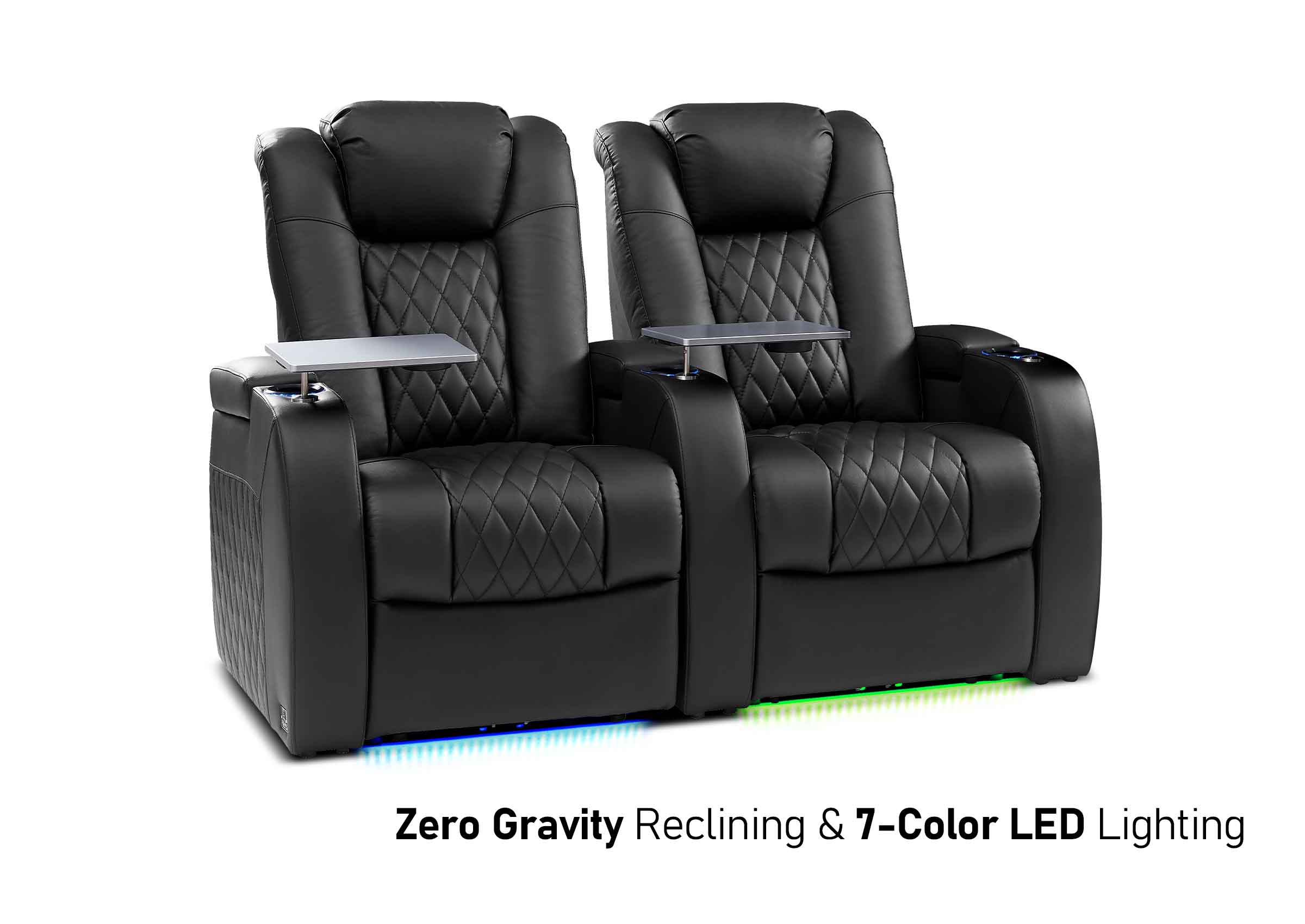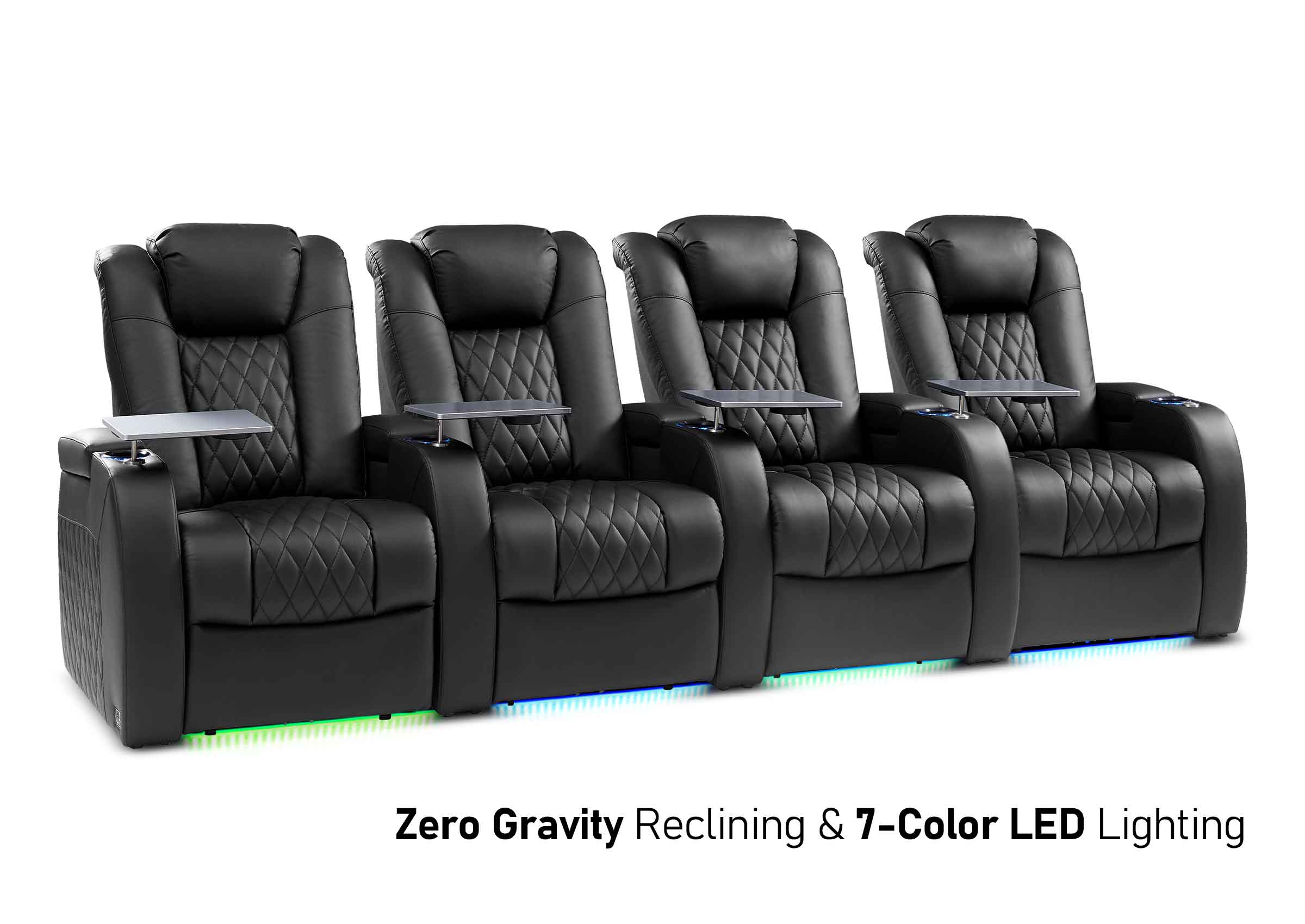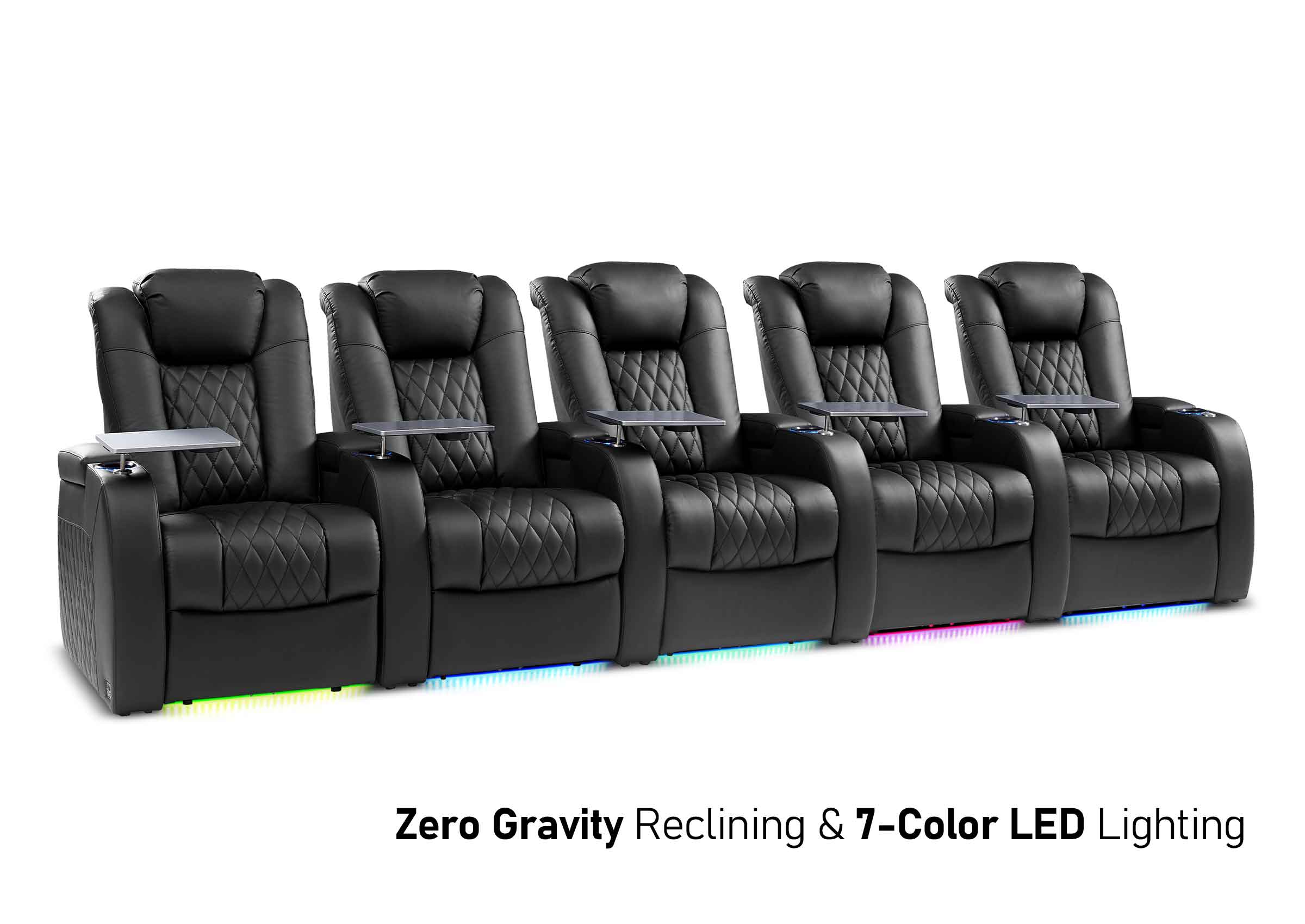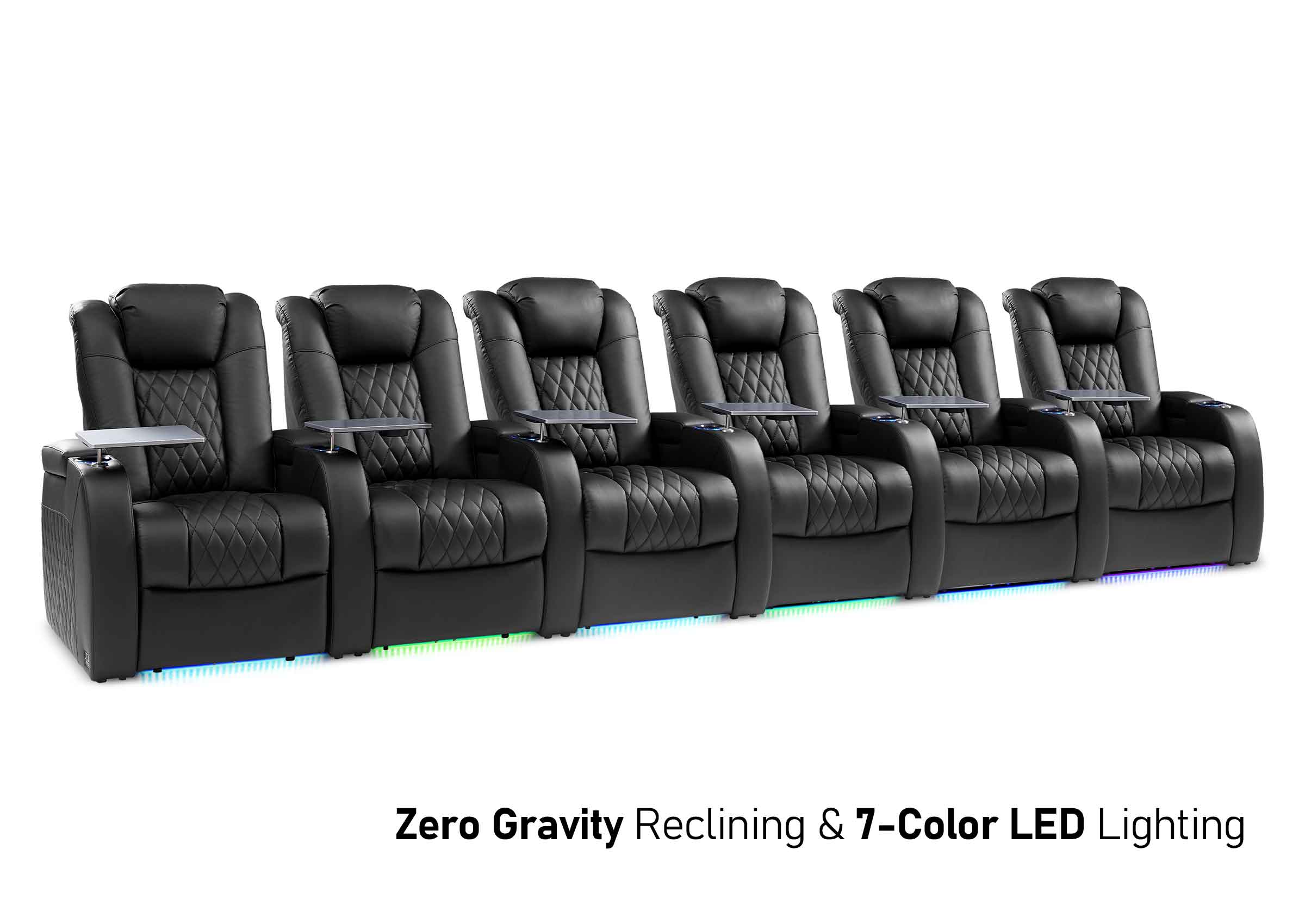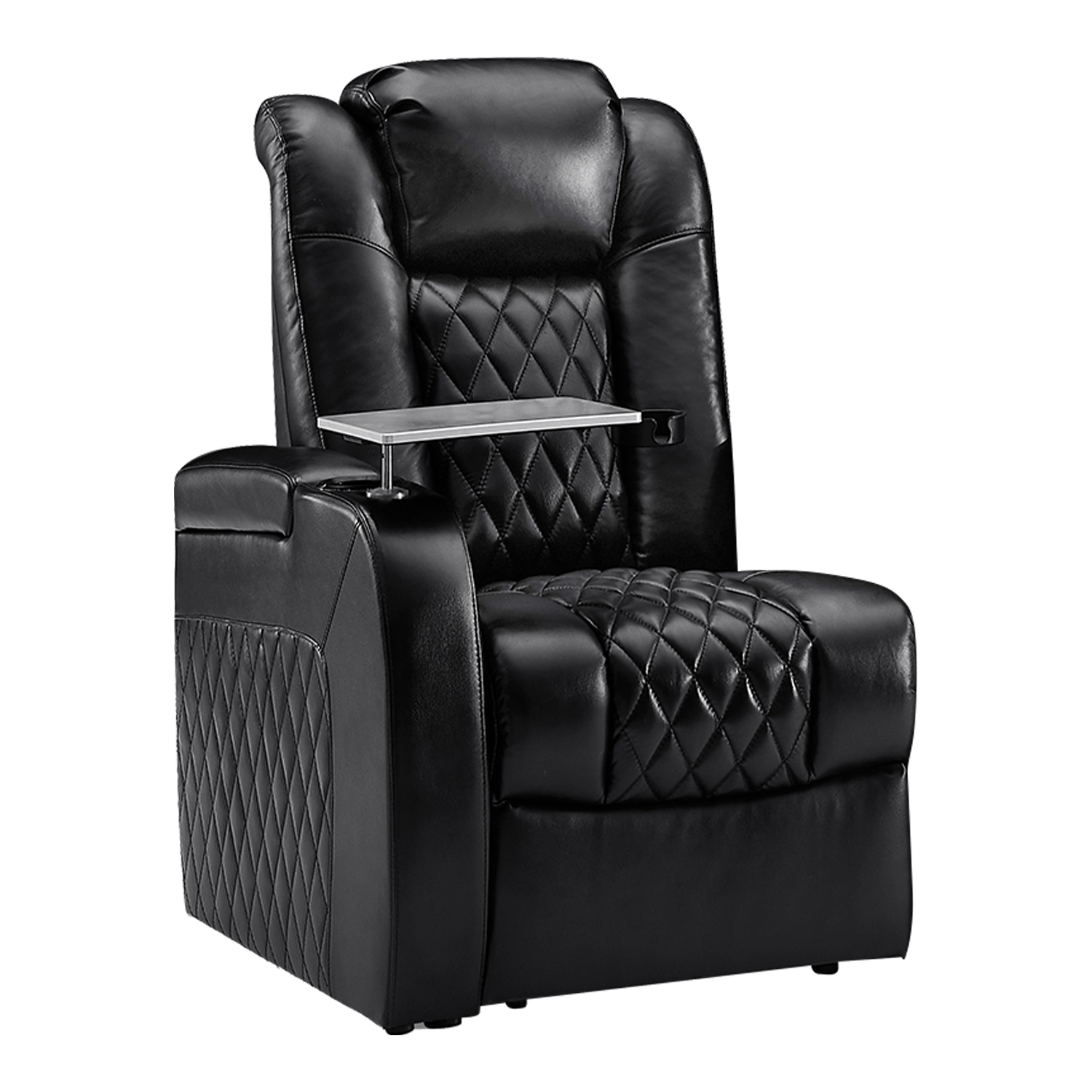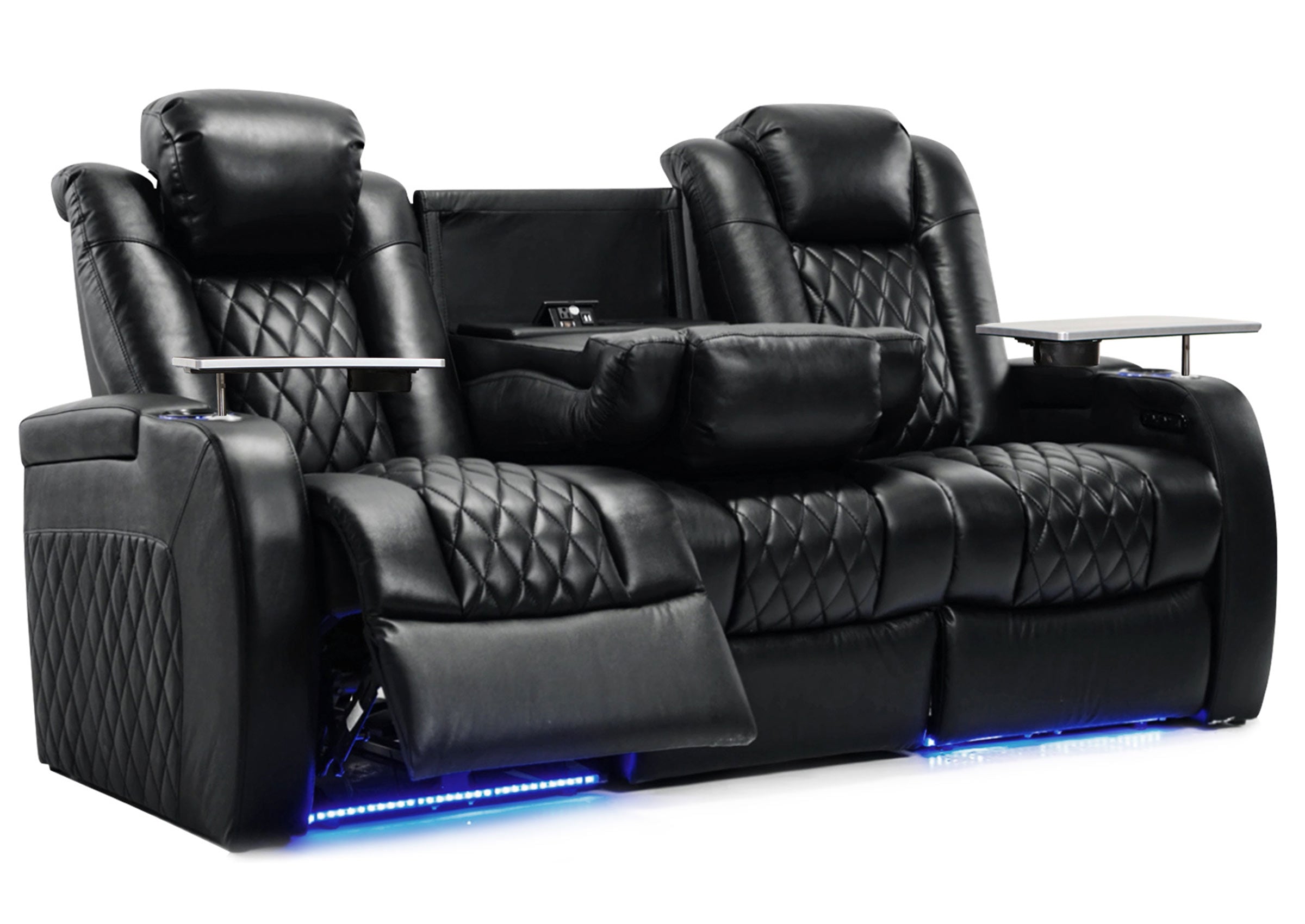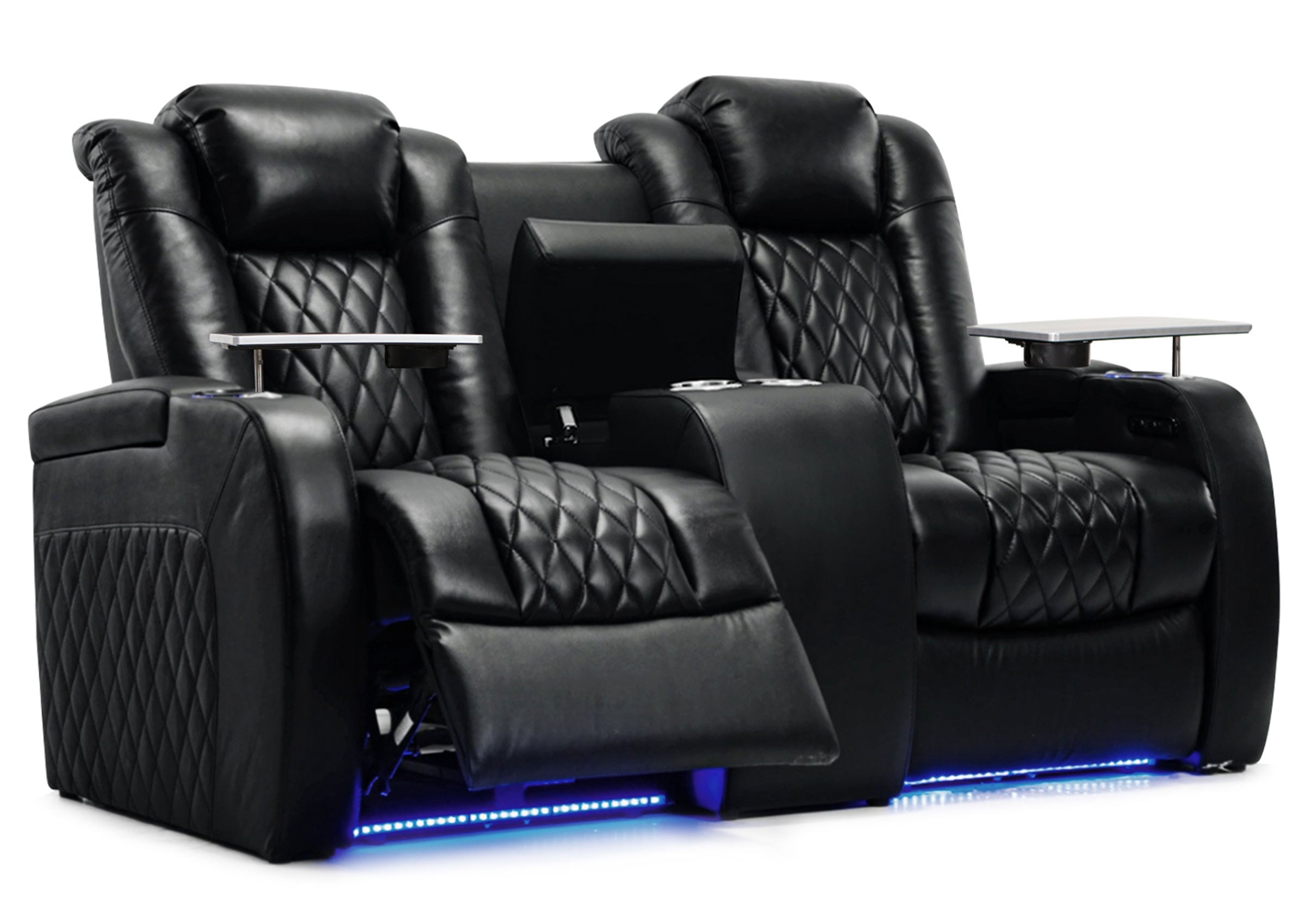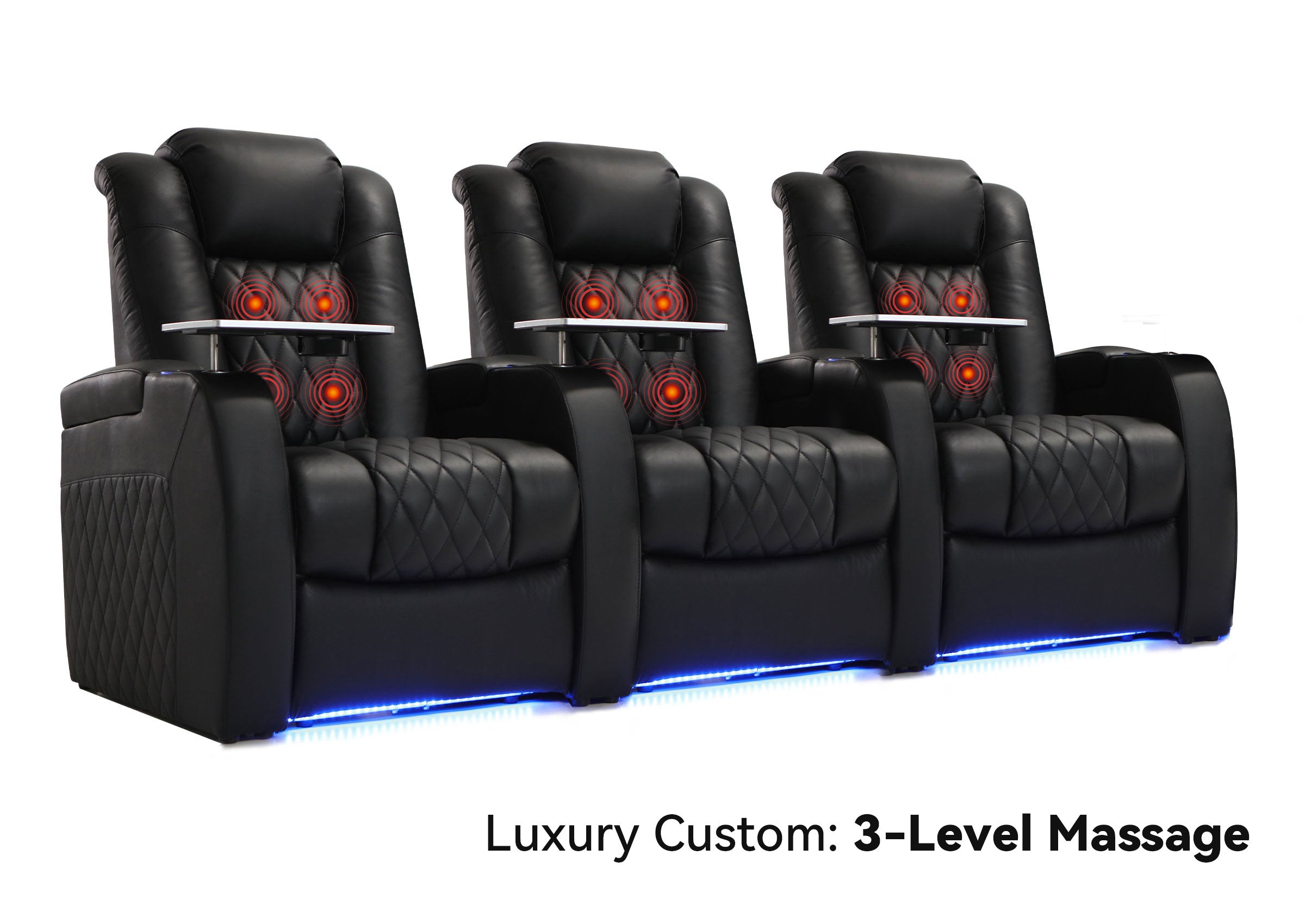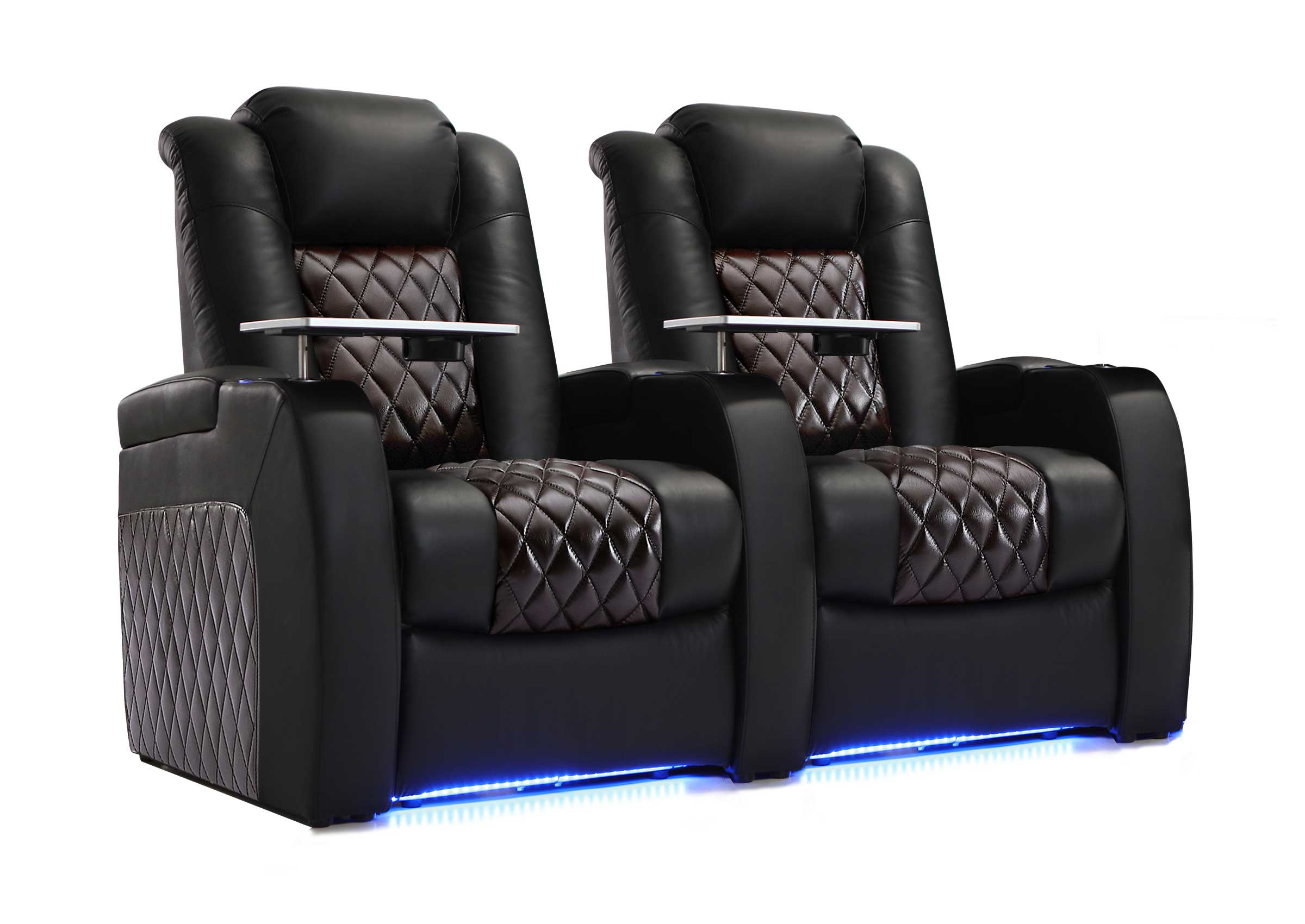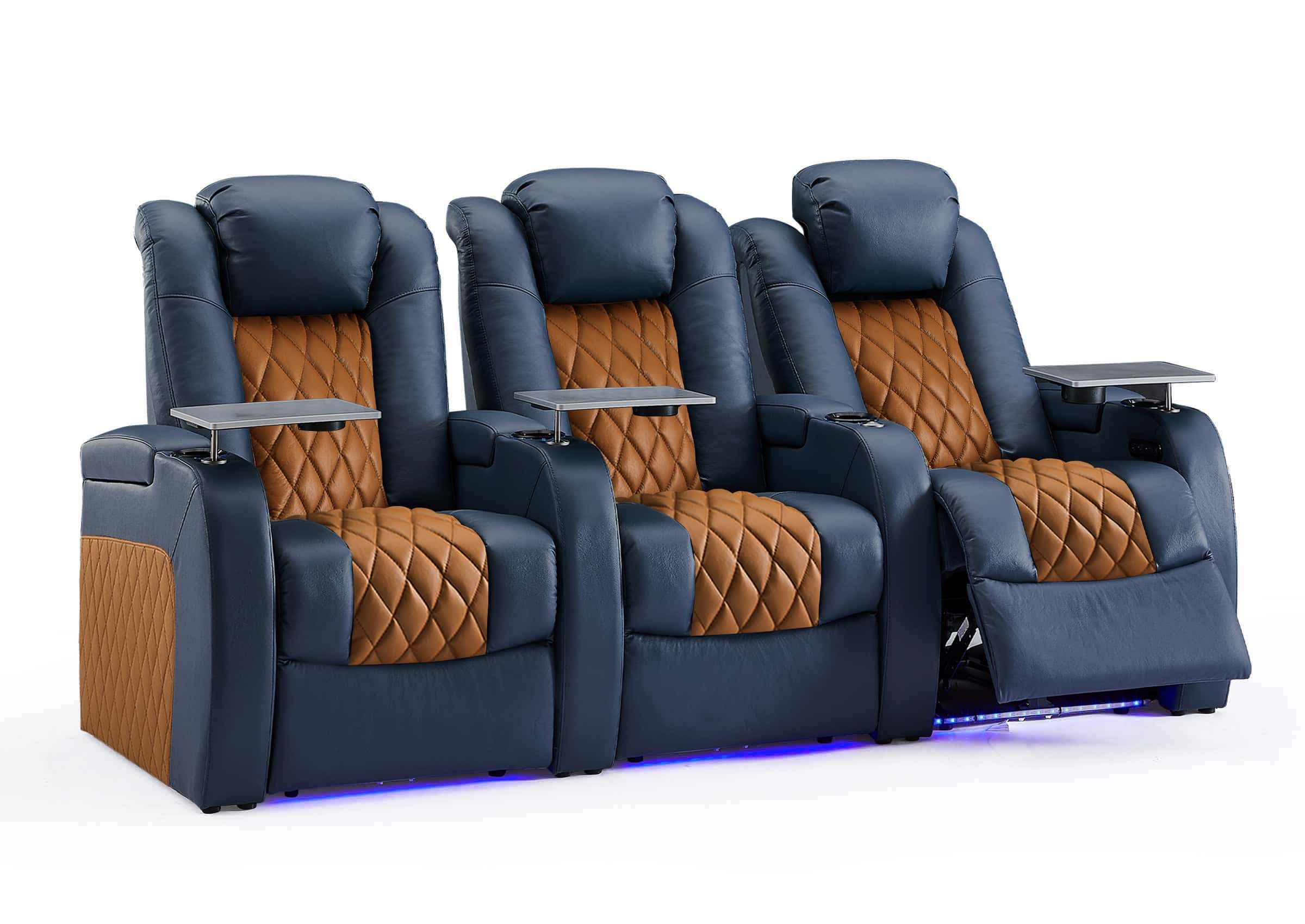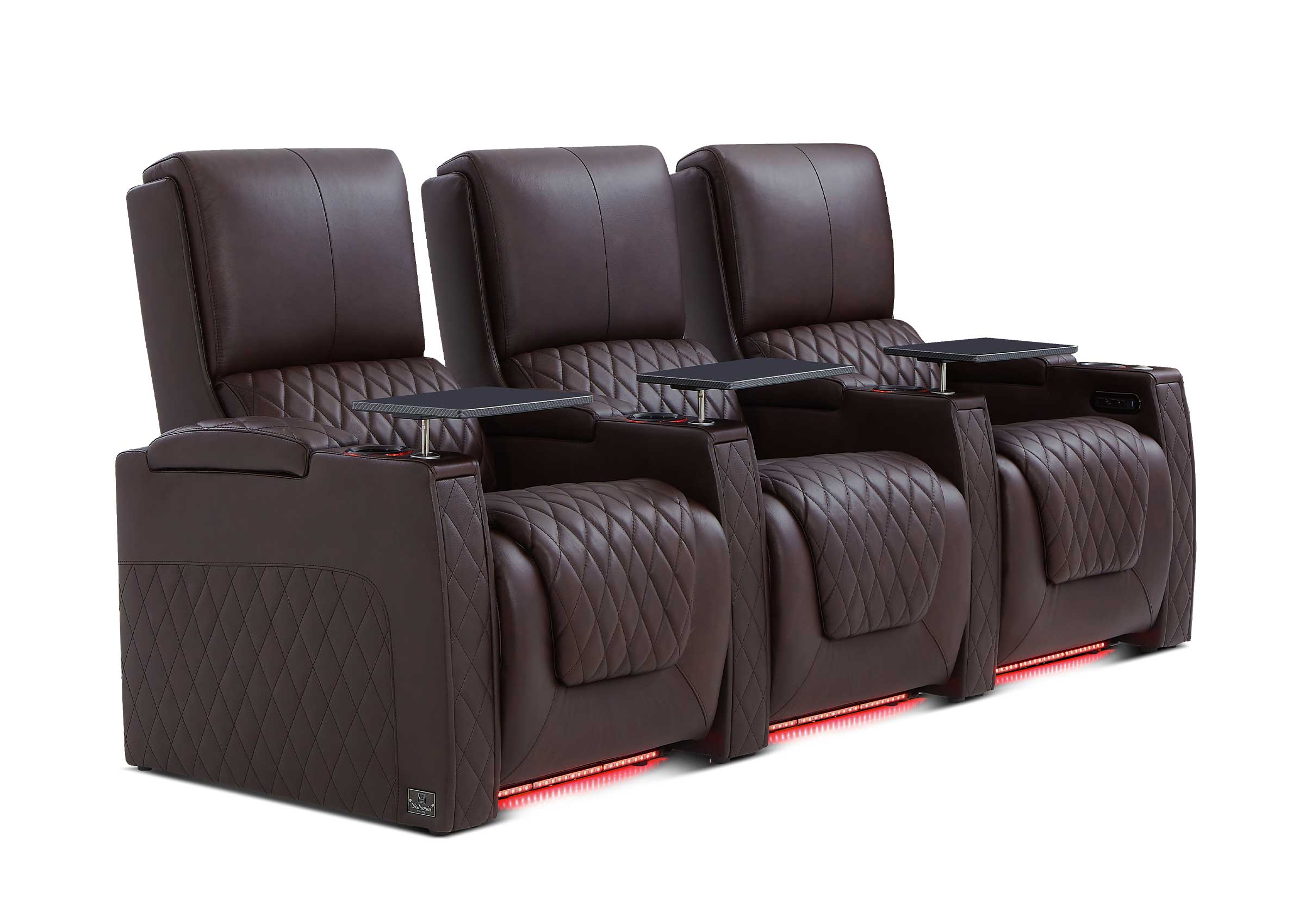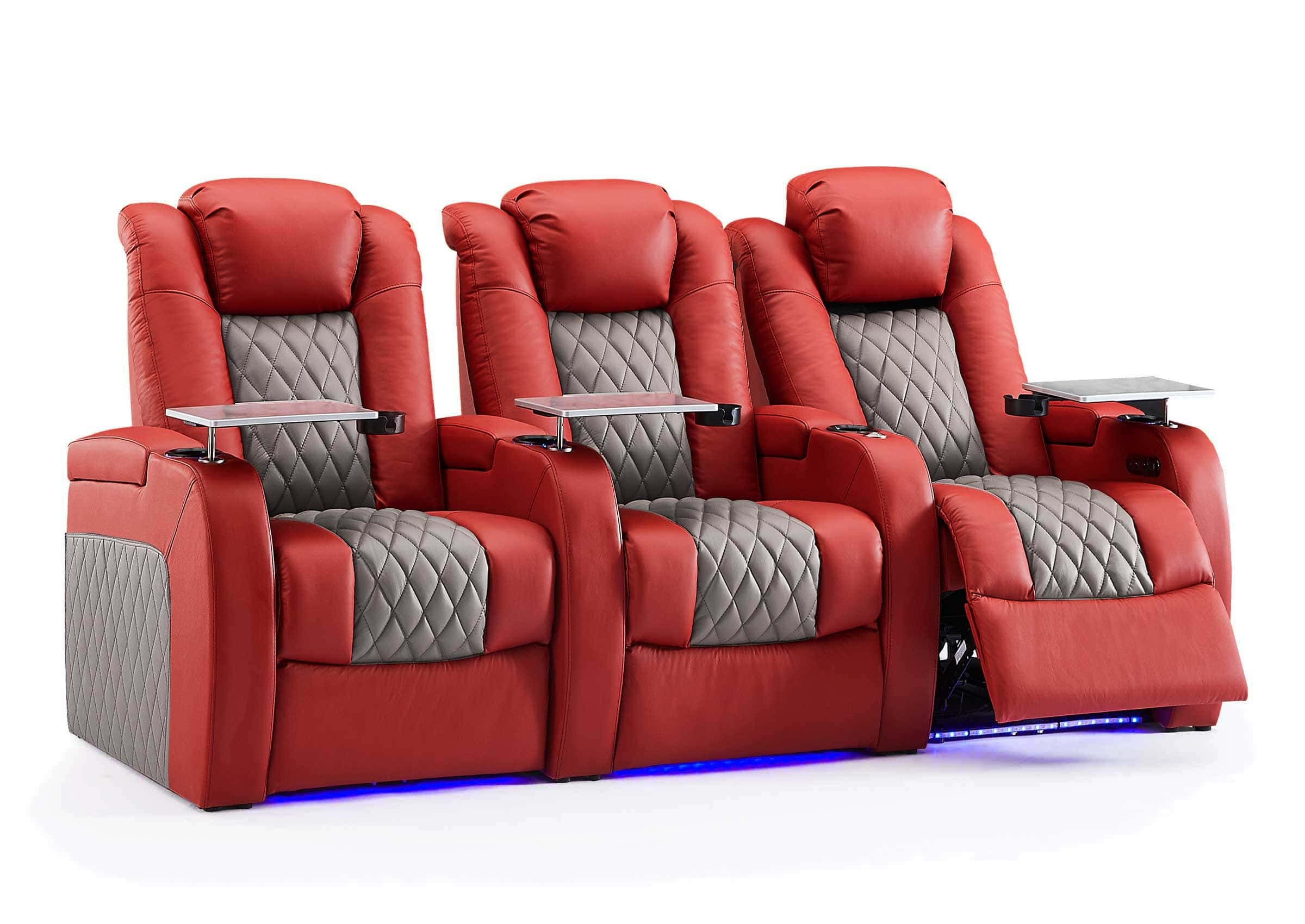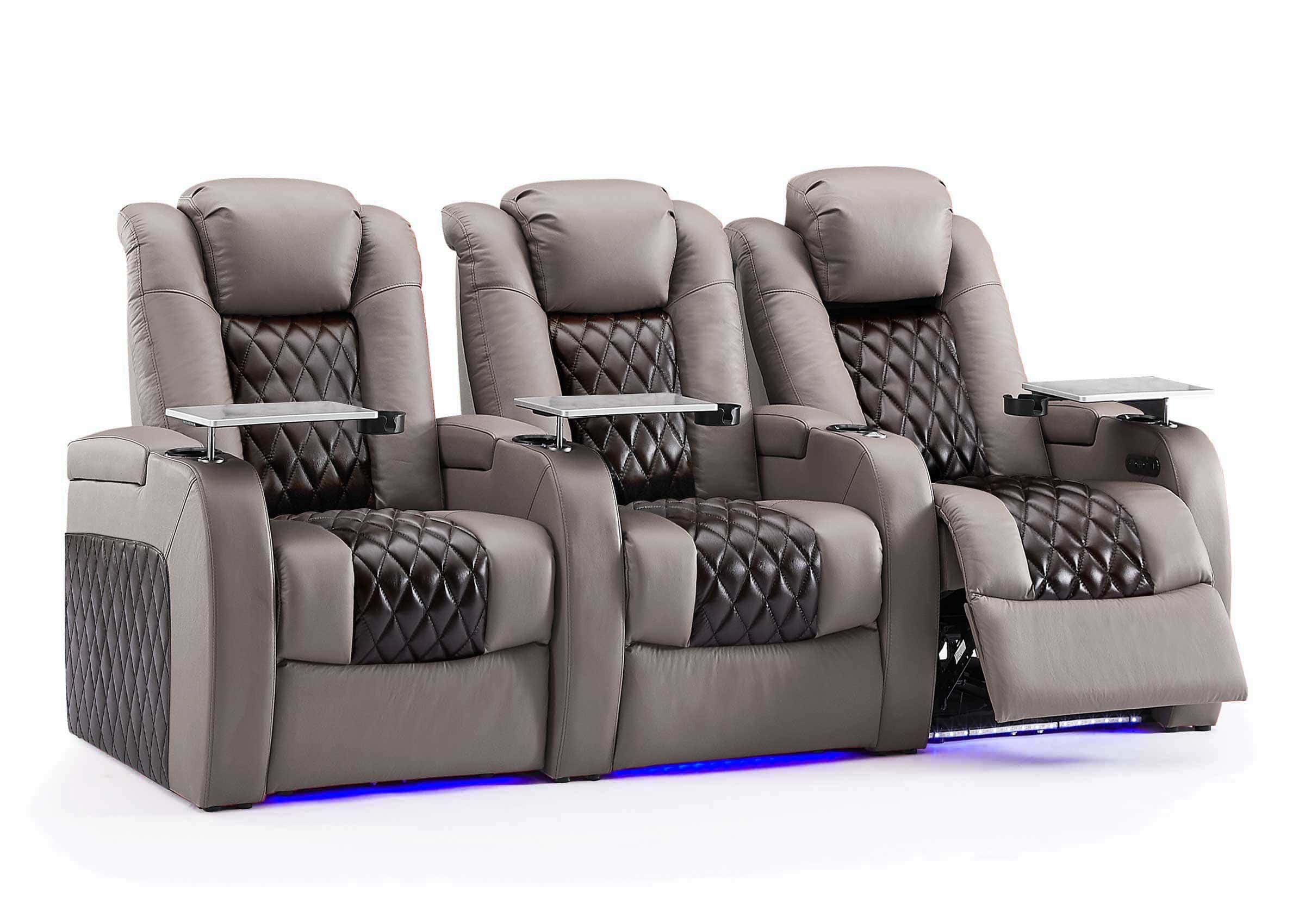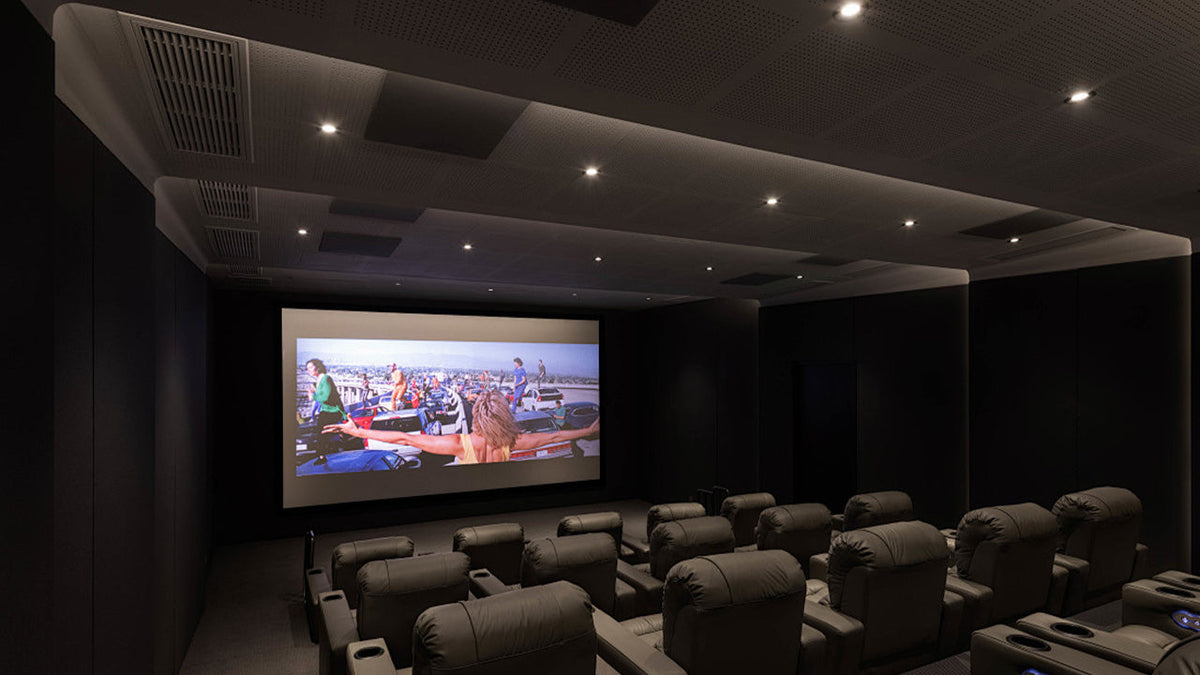Good lighting makes a big difference in your home theater. The right lights help you move around safely, protect your eyes during movies, and make the room look great. This guide covers everything you need to plan your theater room lighting - from basic setup to smart controls. We'll walk you through practical tips and common solutions that work well for most home theaters.

Room Setup - Planning Your Movie Theater Lighting Space
A well-planned theater room starts with careful measurements and smart decisions about layout and budget. These basic steps set the foundation for all your lighting choices.
Get the Right Room Measurements for Lighting
Start by measuring your room's length, width, and height. A good home theater needs at least 15 x 20 feet of space for proper light placement. Take note of any odd corners or built-in features that will affect where you can install lights. The ceiling height should be at least 8 feet to allow proper light fixture placement and prevent harsh shadows.

Manage Natural Light for Better Movie Viewing
Look for any windows in your theater room. Natural light can create glare on your screen and interfere with your lighting design. Make a note of each window's size and position. You'll need blackout curtains or shades for daytime viewing. Automated blinds work well with smart lighting systems and offer the most control over room brightness.
Plan Seating and Light Positions
Your room size determines both seating layout and lighting needs. Leave about 4 feet between rows for walkway lights. Each seat needs task lighting considerations - about 2 feet of space plus lighting for armrests and cup holders. Map out walking paths to place floor lights where people move most often. A typical layout includes 2-3 rows with 3-4 seats per row, each needing its own lighting zones.
Set a Lighting Budget
The main lighting costs for a home theater include:
- Basic overhead lighting: $200-500
- Wall sconces: $50-150 each
- Floor lighting: $100-300
- Smart controls: $200-600
- Installation costs: Usually 20-30% of equipment cost
A buffer of 15% in your budget helps cover any adjustments needed during the setup process.
Essential Lighting Types for Your Home Theater
Creating the right movie atmosphere requires a mix of both main lighting and practical lighting solutions. Each type of light serves specific purposes in your theater room.
Main Lighting Options for Overall Room Brightness
Dimmable Overhead Lights
Install recessed LED ceiling lights with dimming capability. Place them in zones - separate controls for the screen area, seating area, and back of the room help create the perfect brightness for different activities. Most home theaters need 4-6 recessed lights for good coverage.
Stylish Wall Lighting
Wall sconces add both function and style to your theater. Place them at least 6 feet high and 8-10 feet apart. Choose fixtures that direct light upward or downward rather than outward to avoid screen glare. Dark bronze or black finishes work well in most theater settings.
LED Strips for Custom Effects
Add LED strip lights behind crown molding or along baseboards. These lights create a soft glow and help define the room's shape. Choose strips with adjustable colors to match different moods - warm white for general use, dim blue for movie time.
Practical Lighting for Safety and Function
Safety-First Floor Lighting
Small LED step lights along walkways prevent trips and falls. Install them about 18 inches off the floor, spaced every 4-5 feet. Choose lights with a gentle glow rather than bright beams that might distract from the screen.
Focused Seat Lighting
Small spotlights near each seat help people find their snacks and drinks. These lights should point downward and include individual controls. Built-in cup holder lights serve the same purpose while adding a premium look.
Equipment Area Illumination
Place small, directional lights near your AV rack and storage areas. This helps with equipment adjustments and media selection without disrupting others. A simple LED strip with motion sensing works well here.

Key Area Lighting - Strategic Spots for Home Theater Comfort
The right lighting in specific areas makes a huge difference in both comfort and function during movie time. Two zones need special attention: your seating arrangement and the screen surroundings.
Smart Lighting Solutions for Seating Areas
Between-Seat Lighting Placement
Small LED markers between seats help guide movement without disturbing others. Mount these lights low, near the floor, and face them downward. A brightness of 5-10 lumens provides enough light without being distracting. Space them evenly, about 2-3 feet apart along each row.
Cup Holder Light Installation
Built-in cup holder lights serve both style and safety. Pick holders with soft blue or amber LEDs - they're bright enough to see drinks but won't affect screen viewing. Most quality cup holder lights cost $25-55 per seat and run on batteries or low-voltage wiring.
Armrest Light Selection
Add small LED strips under armrests for subtle guidance. Choose lights with manual switches or motion sensors. Stick to warm white or amber colors at 2-3 lumens per strip. These lights help people find their seats while adding a premium theater feel.

Screen Area Lighting for Better Viewing
Eye-Friendly Backlighting
Place LED strips behind your screen or TV to reduce eye strain. The light should extend 2-3 inches beyond each edge of your screen. Keep the brightness at 10-15% of your screen's maximum brightness for the best effect.
Anti-Glare Techniques
Position all room lights at least 4 feet away from the screen. Angle lights away from the screen surface. Use matte black paint or dark materials on walls near the screen to absorb stray light and prevent reflections.
Movie-Time Brightness Settings
During movies, keep general room lighting at 5-10% of full brightness. Screen backlighting should stay at a consistent low level throughout the film. This balance helps prevent eye fatigue during long viewing sessions.

Easy Control Options - Make Home Theater Lights Work for You
Good lighting control makes the difference between a basic room and a true home theater experience. Modern options range from simple remotes to advanced smartphone apps, each offering different ways to adjust your theater lighting.
Remote Control Basics
Standard RF or IR remotes work well for basic setups. Pick a remote with no more than 6-8 buttons for common actions. Program one-touch controls for main lights, seat lights, and screen lights. Most quality theater remotes cost $50-100 and can handle up to 4 lighting zones.
Smartphone Apps for Total Control
Many lighting systems now connect to your home Wi-Fi. Popular apps like Lutron, Philips Hue, or Control4 turn your phone into a command center. These apps show real-time status of all lights and allow quick adjustments. Most systems require a hub ($80-200) plus the free app.
Preset Scenes for Different Uses
Movie Time Settings
- Main lights: Off
- Step lights: 10% brightness
- Screen backlight: 15% brightness
- Seat lights: 5% brightness
Casual Viewing Mode
- Main lights: 30% brightness
- Accent lights: 50% brightness
- Screen backlight: 20% brightness
- All seat lights: On low
Full-Room Cleaning Light
- All lights: 100% brightness
- Screen backlight: Off
- Floor lights: Maximum brightness
- Equipment lights: On full
Party and Gaming Setup
- Main lights: 40% brightness
- LED strips: Color mode
- Seat lights: Pulsing effect
- Screen backlight: Color-match mode
The right control system saves time and enhances your viewing experience. Simple buttons or screen taps can transform your theater room from movie mode to party central in seconds.

Common Problems - Simple Solutions for Home Theater Lighting
Movie fans often run into these lighting issues. Here's how to fix them.
Screen Glare Problems
The main issue is light washing out your screen. Install dimmer switches for each area. Keep lights near the screen at very low settings. Add dark curtains over windows. Use dark, non-shiny decorations around the screen.
Hard to Find Seats and Items
No one can find their drinks or move around safely. Put floor lights along the aisles. Light up cup holders. These provide just enough light without ruining the movie.
Confusing Light Controls
Put a simple control panel near the door. Add basic switches (bright, dim, off) on key walls. Use one remote for common settings. Make sure all switches have clear labels.
Patchy Room Lighting
Space ceiling lights about 4 feet apart. Point wall lights upward for better spread. Check different areas with your phone's light meter. Each seat should have similar lighting.
Safety Hazards
Add motion lights near steps. Mark walking paths with small lights. Keep equipment lights separate. Install backup lights for power outages. Use lights that fade in slowly to avoid sudden bright flashes.

Make Your Home Theater Lighting Better!
Good lighting makes all the difference in a home theater. The right mix of lights helps everyone see better, move safely, and enjoy movies more. From basic ceiling lights to smart controls, each part of your lighting setup matters. Take it one step at a time, and you'll create a theater room that works well for movies, TV shows, and parties.








